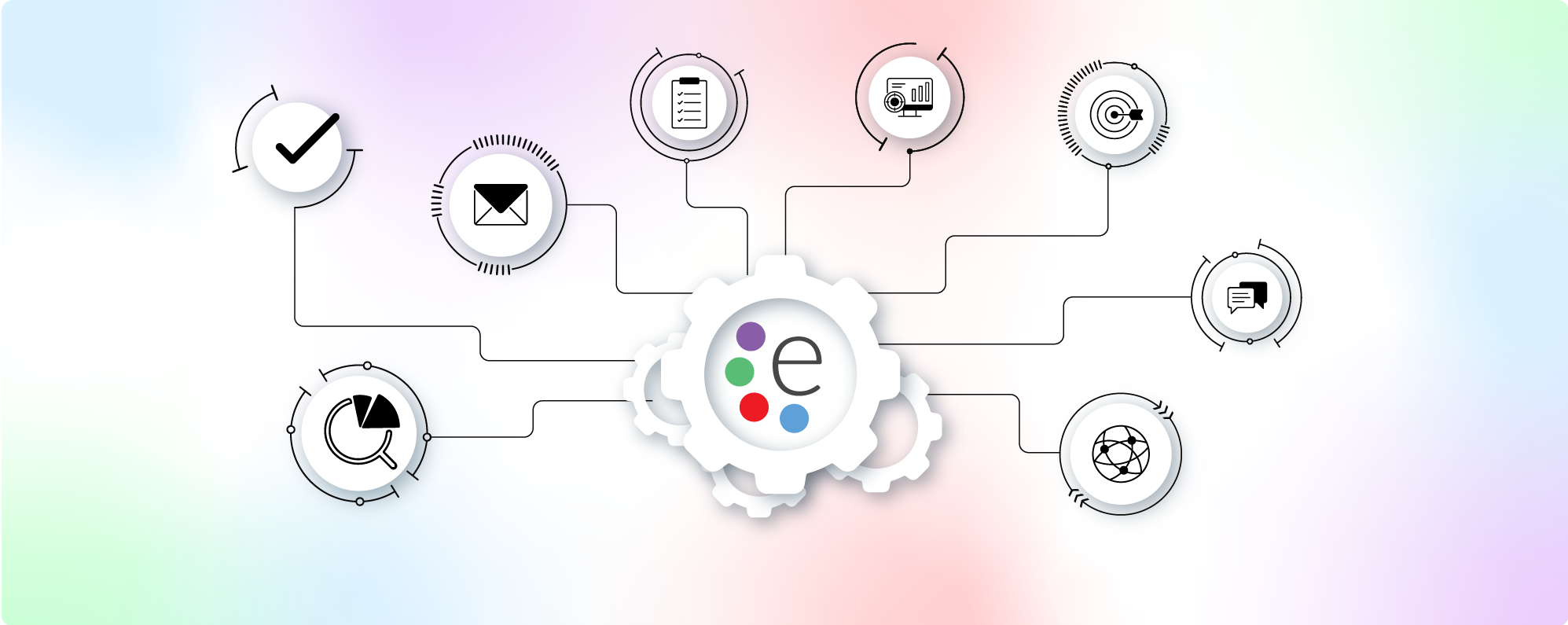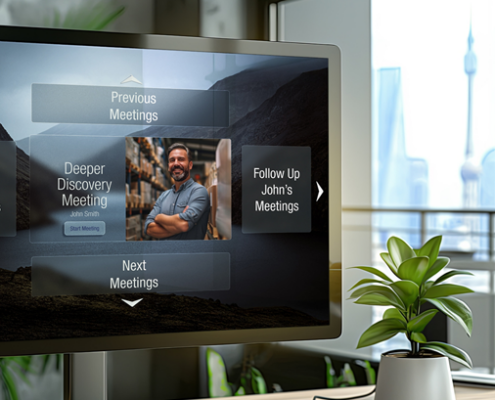What is a Virtual Meeting Space?
Despite the hype of robo-advising, the number of financial advisors rose in the U.S. to almost 15,000 registered RIAs in 2021. Clearly U.S. consumers are still eager to engage with humans to navigate the complexities of financial planning. But, with Covid-19 and shifting demographics, traditional in-person meetings are happening less and less. To help financial advisors remain connected to their clients, we envisioned a new way for advisors and their clients to meet: in The Conversation Hub virtual meeting space. In this blog, we outline what a virtual meeting space is and how it is transforming relationships between RIAs and their clients.
What is a Virtual Meeting Space?
A virtual meeting space is a video-meeting based environment in which more complex meetings can be managed with guided agendas, integrations with 3rd-party data apps, and analytics to evaluate meeting quality beyond vanity metrics like connection speed.
Important Elements of Virtual Meeting Spaces
There are a few key components that distinguish virtual meeting spaces from standard video meetings:
- Meeting Pathways: Standard video meetings don’t help guide your meeting. However, virtual meeting spaces should come equipped with the ability to create a meeting pathway that helps guide the host across topics and agenda items. Using the frames provided in The Conversation Hub as a conversational guide, you can organize and present information to your clients in a clear and concise manner.
- Integrations with Data Apps: Instead of endlessly switching between PowerPoint, Excel, and dozens of browser tabs and windows, virtual meeting spaces should integrate with platforms like Salesforce in order to pull in data, so you never have to leave the room screen. Confining your presentation to one screen and window will help keep the focus on what matters most: your clients and their objectives.
- Meeting Evaluation: Most video meeting software includes vanity metrics around connection speed, number of attendees, and meeting length. But how do you objectively assess how well your meeting met the needs of your client? With The Conversation Hub’s Meeting Quality™ score, you can set goals around how much time you spend on given topics like compliance or upselling and quickly understand if you adhered to those goals or not.
Meeting Types to Host in Your Virtual Space
There are a variety of meeting types you can host in your virtual space. The most common ones we see are:
- Introduction Meeting: When you are first meeting with a client, it’s important to ask them about their financial goals and objectives as well as give them an introduction to yourself and your firm in order to build trust and confidence. This helps set the stage for the discovery meeting where you will ask more personal and potentially uncomfortable questions.
- Discovery Meeting: Once you’ve established a baseline with your new client, you’ll want to dive further into their financial background and vision for the future. Sample questions to ask are: do you have any dependents? What are your current savings and investment levels? At what age would you like to retire? What is your accepted level of risk tolerance? These deeper questions will help you build a tailored financial plan and strategy.
- Review Meeting: At the end of the year, it’s important to recap the goals you and your client set out on January 1st and review how successful you were at achieving those goals. It’s also important to look ahead to next year to see if they want to change goals or priorities based on the previous year’s performance.
- Annual Tax Meeting: The dreaded annual tax conversation. This meeting typically takes place during the summer so that adjustments can be made if needed before filing taxes at the end of the year. Also, if your client files quarterly, this ensures you’re staying on top of any potential issues.
If you are a financial advisor still using traditional video meeting platforms like Zoom to host your client conversations, request a demo today to see how The Conversation Hub can elevate your customer experience.



